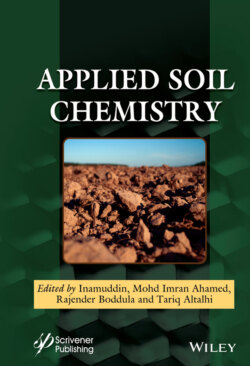Читать книгу Applied Soil Chemistry - Группа авторов - Страница 19
1.2 Influences Impacting Carbon Stabilization Rates in Soils
ОглавлениеThe amount of organic material present in soils is influenced by many factors (Figure 1.2). Establishing knowledge and understanding of the key influencing factors are essential in determining how carbon uptake and retention of certain soil types can be improved from a long-term carbon capture and sequestration perspective. In a specific soil, the alteration rate of the unit quantity of organic material it contains is established by subtracting the degradation rate from the input rate of biologically derived material. The organic matter degradation rate is positively correlated with the quantity of organic matter present in the soil. This relationship means that progressively the degradation rate converges to the input rate as a soil matures to establish an environmentally adjusting equilibrium with the organic matter remaining constant from that point. The quantity of carbon resident and fixed in a unit mass of soil can therefore be enhanced by either reducing the rate of its degradation of organic matter or accelerating the input of organic matter. On the other hand, more carbon can also be fixed in a soil system if more mature humified material is continuously produced. This is because the humified material tends to be inert with carbon contributing to its formation, but unlikely to leave it for millennia until it is eroded by geological processes or excavated by anthropogenic activities.
Figure 1.2 Schematic diagram showing how the key variables of climate, vegetation, and soil characteristics impact organic matter concentrations in soils (modified after Sun et al., 2019 [22], who developed the diagram with a specific focus on forest ecosystems).
